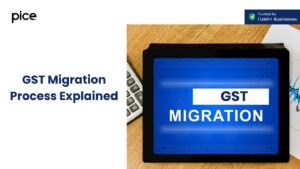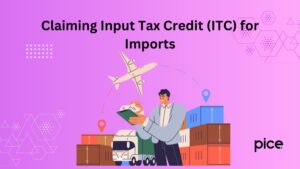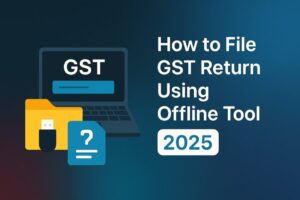Tax Invoice Under GST
- 25 Nov 24
- 16 mins
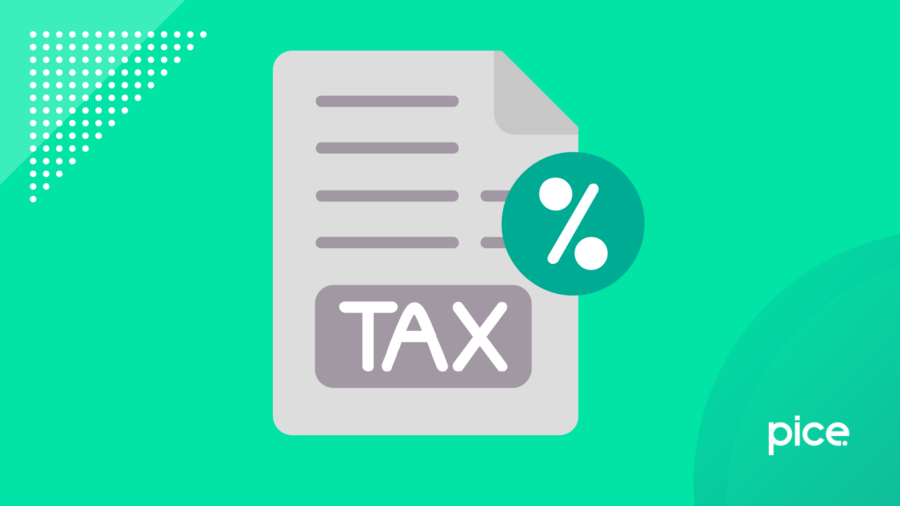
Tax Invoice Under GST
Key Takeaways
- Tax invoices ensure GST compliance and accurate financial records.
- They are essential for claiming input tax credits under GST.
- Accurate invoices prevent disputes and penalties.
- They serve as formal transaction evidence and audit support.
- Streamlined invoicing enhances efficiency and compliance.
A tax invoice under GST represents a legal document for businesses that enlists different transactions made towards a supplier. Tax invoices typically include details like the name and address of the product or service provider, a description of the supplies, the quantity of the supplies, the total amount due, and the applicable taxes.
To get a detailed idea regarding the format of a GST invoice, we suggest you read further.
Why Tax Invoices Are Important?
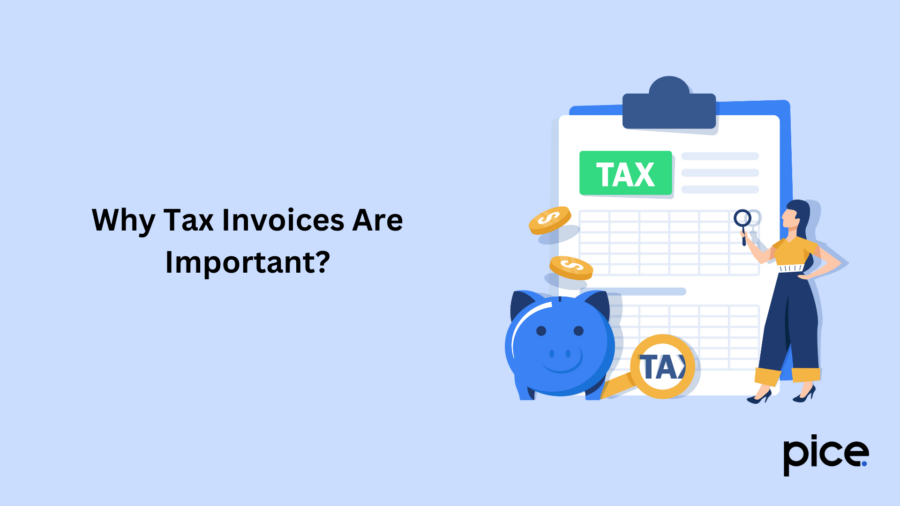
Tax invoices are crucial for all GST-registered businesses because they help preserve official records of financial transactions. Businesses track their sales, tax obligations, and expenses through tax invoices. Moreover, these documents come in handy when there are any disputes while auditing.
Suppose a company decides to maintain its regular invoices in physical form as sticky notes. Although this colourful collection may look attractive at first, it will lead to a mess when computing tax liabilities.
Therefore, businesses must understand the purpose of preparing tax invoices and practical ways to maintain them. Moving further, here you will develop a comprehensive understanding of legal compliances for GST invoices.
What Is a Tax Invoice?
A tax invoice is meant for recording a transaction between a supplier and a consumer. GST invoices record all sale details, comprising the number of units delivered and the price of delivered supplies along with the total amount due. In simple words, a tax invoice is a record of the money changing hands.
When Is a Tax Invoice Required?
Whenever a supplier sells a taxable service or product, a tax invoice needs to be generated. The buyer receives one of the copies of invoices when purchasing a taxable supply. Based on jurisdiction, the specifics of an invoice may vary. However, they are common for any transaction where sales tax is levied.
Who Issues Tax Invoices?
A GST-registered seller is responsible for providing you with a tax invoice. It is simply because these individuals are entrusted with the duty of collecting tax from the buyer.
In some cases, the purchase may also require the issuing of a tax invoice. For instance, if a business needs supplies for their operations, then they must self-assess the tax liabilities. For that, they would need to generate a tax invoice for themselves.
What Information Is Included in a Tax Invoice?
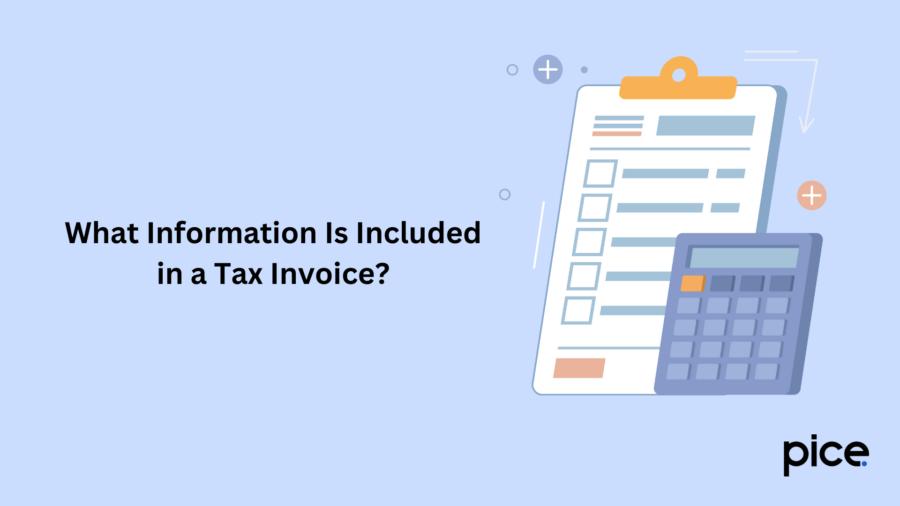
A prescribed list of information has to be present in a tax invoice so that one can consider it to be legit. This typically covers:
- The business name, address details and GST registration number of the seller
- Name and address of delivery
- Description of the taxable sale
- Sale price per unit of the supplies along with the total bill amount
- Quantity of goods or services or both that are purchased
- Date when the invoice is being issued
- All applicable taxes, showing their rates and the amount incurred for that bill
- The invoice number
Suppose, a business sells 100 crackers at ₹25 each where the sales tax rate imposed is 18%. In this case, the tax invoice should mandatorily disclose the following data:
- Seller’s registered name with a complete description of its address and GST/HST number
- Item description: 100 crackers
- Recipient's name and address
- Quantities sold: 100
- Price per unit: ₹25
- Total amount: ₹2,500
- GST rate: 18%
- Total tax amount: ₹450
- Invoice date: Oct 5, 2024
- Invoice number: 10145
The seller must make sure that all the required information is included on the tax invoice, or else it will not be considered valid.
Importance of Accurate Information on a Tax Invoice
Mentioning correct information and values on a tax invoice is extremely vital. If there are mistakes or omissions, it can lead to issues going forward both for the buyer and the seller. For instance, if the tax amount is mentioned incorrectly, the registered seller is either undercharging or overcharging its customer.
When the tax authorities find out such discrepancies, they can impose penalties on the seller. Furthermore, if a tax invoice is deemed invalid, the registered supplier will be ineligible to claim input tax credit from the GST council. It will directly increase their tax burden.
Thus, it is of utmost importance to include precise descriptions of all the transaction details in an invoice. It guarantees accuracy and transparency.
Types of Tax Invoices
Taking into account the diverse business compliance needs and other jurisdiction aspects, businesses generate different tax invoices. Here are the 3 broad types of invoices:
- Full Tax Invoice
You will see a full tax invoice under GST as the most comprehensive version among commonly used invoices. It details every minute aspect, including the seller's name and address, the purchaser's details, a brief description of the goods or services sold, the total price, net quantity sold, applicable taxes, and finally, the bill date and a unique invoice number.
Whenever there is a larger transaction involving a substantial amount, a full tax invoice is required. It is also generated for international trade transactions.
Example: A business purchases office equipment worth ₹10 lakhs from a supplier. To claim a tax deduction and input tax credits for GST, the business must request a full aggregate invoice. This invoice states details like the supplier's name, total GST amount, and a breakdown of the items purchased.
- Simplified Tax Invoice
As the name suggests, a simplified tax invoice is a less detailed version compared to a full tax invoice. Despite the limited information provided, these invoices still meet the minimum requirements to be considered valid under the jurisdiction.
In cases where the purchase amount is not that significant, you will observe the use of a simplified tax invoice. They help make the invoicing process straightforward.
Example: Suppose, you visit a hair salon that provides you with a haircut service for ₹400. In this scenario, a simplified GST invoice may be issued as the transaction is not too significant.
- Electronic Tax Invoice
A seller generates an e-tax invoice electronically and forwards it to its clients in the form of a link.
In recent times, this type of tax invoice under GST has been very popular. By adopting electronic transactions, not only are billing practices made more sustainable, but the transactions are also more efficient. However, keep in mind that to generate a valid electronic tax invoice, an authorised person must meet the same criteria as they would for paper invoices.
Example: An offline apparel store sells clothes to its customers, where it generates e-bills that describe all the transaction-related details. Here, the bill should have all the necessary information, and the customer can either receive it via their email address or a text message.
Requirements for Issuing a Tax Invoice in India
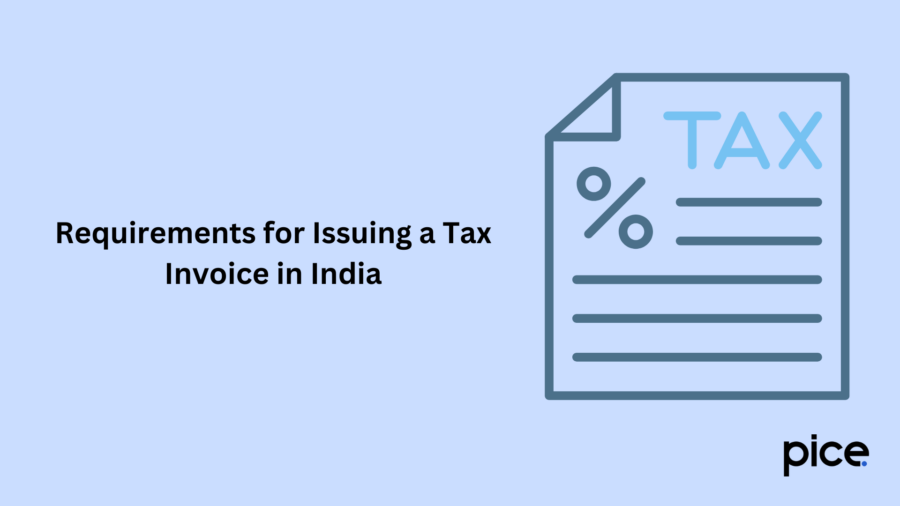
Businesses in India must comply with several legal obligations before they can start issuing tax invoices.
Here, you can check out some key requirements:
- Legal Requirements
Businesses need to take care of multiple legal standards before issuing tax invoices. These norms have been established to ensure precise invoices that are aligned with the GST law regulations.
These are the legal requirements for a tax invoice under GST:
- The invoice has to have the GSTIN, name and address of the supplier along with certain details of the customers. Additionally, it should describe the supplies provided, the quantity and price of the commodities or services sold, the applied sales tax rate and tax amount, and finally the date of billing and invoice number.
- Regular invoices should be serially numbered and after issuing it to a particular customer, the seller needs to hold a copy of the invoice with them.
- As per the GST law, invoice issuance dates have to be within a particular timeline from the time of taxable supply.
- Businesses are liable to electronically file their invoices on the GST portal. Moreover, they need to maintain records for the same.
If these provisions are not satisfied, a GST-registered business will be subject to significant penalties.
- Timelines for Issuing Tax Invoices
Depending on the class of taxable supply, the relative timelines for generating tax invoices vary. The two primary supply types are segregated into the supply of services and the supply of goods. Have a close look at the timelines before generating tax invoices under GST for the different types of supply.
- For the Supply of Goods
When goods are removed from the supplier’s inventory or when they are delivered to the customer, a relevant tax invoice needs to be issued. It infers that while supplying goods, an invoice must be drawn either before or during the transaction. Where the goods are transported or shipped, the GST invoice should be ready before the supplies are loaded for delivery.
Example: If a registered person sells goods to another individual and delivers them to the buyer's address, they are required to issue a GST invoice at the time of delivery. Likewise, if the supplier ships goods to one of its buyers, they must generate a taxation bill before the shipping team loads the goods onto a vehicle.
- For the Supply of Service
Unlike goods, a registered taxpayer involved in service supply can issue a tax invoice within 30 days from the time of supply. When services are delivered consistently, invoices may be issued within a 30-day time limit from the payment due date.
Example: If a digital marketing agency delivers services to clients on a particular date, it must create a compliant invoice within 30 days from that date. Similarly, if another company offers services monthly, it must provide a comprehensive GST invoice within 30 days of the month's end. This invoice should provide complete details of all transactions to ensure legal compliance.
- Penalties for Non-compliance
The Indian Government is deeply committed to tackling issues surrounding GST compliance. Thus, businesses not adhering to the taxation policies can face serious consequences.
The non-compliance penalties can at times escalate to imprisonment alongside fines in critical situations. Here, you can have a precise idea regarding the possible implications for business:
- Not issuing accurate tax invoices for business or issuing a misleading one may attract a penalty of 100% of the tax due amount. The fine sum can go up to ₹10,000.
- Deliberate issuance of fraudulent or fake invoices can lead to legal prosecution and imprisonment for a maximum of 5 years.
- Failing to ensure the accuracy of invoices and other crucial accounting documents can result in fines of up to ₹25,000.
Note: If a business continuously resorts to non-compliance, it will lead to increased penalties and stricter legal action and can result in the cancellation of GST registration.
To avoid the aforementioned consequences, businesses should issue B2B invoices under GST in the prescribed format. Additionally, timely delivery of these invoices to customers is crucial for legal compliance.
Information to Include in a Tax Invoice
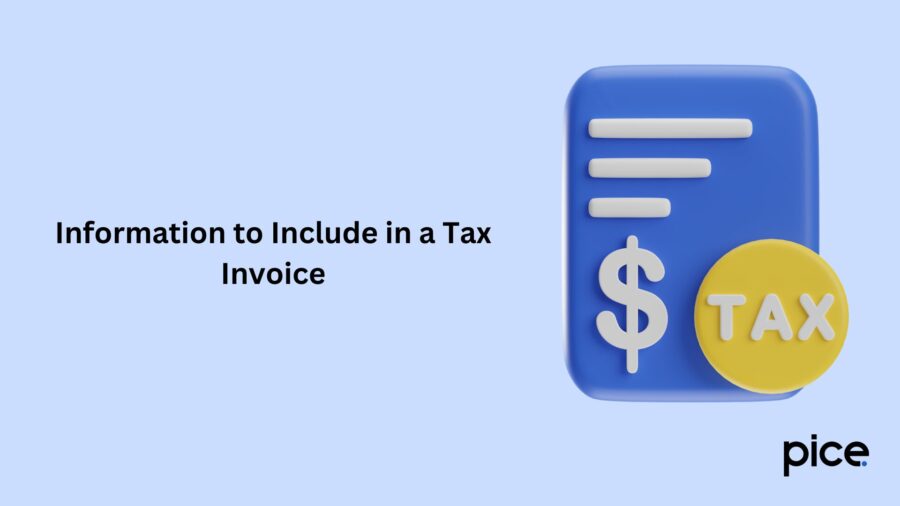
Tax invoices are typically issued addressing the customers. The Indian Government has stipulated that certain details must be incorporated into these invoices to facilitate transparency for the end consumers.
Therefore, a supplier of services or products must keep in mind the following key elements while generating their commercial invoice:
Contents of GST Tax Invoice
These are the mandatory information to be included in compliant tax invoices under GST:
- Name, billing address and GSTIN of both the supplier and the buyer
- Date of issuance of tax invoice along with the invoice number
- Brief description of the sales transactions made
- Total quantity of sold items and their prices
- Applicable taxes like CGST, SGST/UTGST and IGST for exports with their respective amounts
- Total payable amount by the recipient inclusive of taxes
Furthermore, a supplier might decide to add supplementary details in a commercial invoice to offer greater clarity about the transaction. These comprise of:
- Rebates/Applicable Discounts/GST rate
- Delivery date of the taxable supply
- Name and contact details of the shipper or delivery partner
- Terms of delivery and payment
How to Prepare a Tax Invoice?
Proper invoicing procedures under GST are crucial for businesses. It facilitates smooth transactions and ensures adherence to legal standards.
Here is the invoicing process to create a perfect GST bill:
Step-by-step Invoicing Process
Step 1: Collect all the Necessary Information
Businesses must first gather all essential information prior to generating a valid tax invoice necessary for smooth transactions. It covers the supplier's and recipient's names and addresses, the supplier's GSTIN, and a description of the products or services that are to be sold. Moreover, the bill should declare the relevant tax rate and the total tax amount besides the total amount due.
Step 2: Decide on a Template From the Available Options or Create Your Own
Businesses have the option to select from a range of automated invoicing that can create customised invoice templates for them. Otherwise, they can make their own template utilising a word processor.
Step 3: Fill in the Details
Once the template is approved, businesses can begin collecting sales tax on transactions and recording it on their invoices. However, their tax invoices must be numbered sequentially, and the maker should include the date of issuance when issuing the invoice. Moreover, the invoice must also include the name and address details of the supplier and a description of the product or service.
Step 4: Calculate the Tax Amount
As the supplier will already have an idea about the applicable tax rates, thus calculations on tax invoices won’t be difficult. After figuring out the amount, the same needs to be clearly mentioned on the tax invoice.
Step 5: Review the Issue of Invoice
To ensure the requisite information is there, the person responsible should review the invoices for sale before distributing them. Any sort of errors or discrepancies can lead to fines later on.
Step 6: Send the Finalised Invoice to the Customer
It is the final step after the tax invoice has been reviewed and approved by the business. If the invoice is in electronic format, then the supplier sends it to the intended person via email.
By implementing these steps, organisations can issue a valid tax invoice under GST that complies with all sorts of requirements.
Valid Tax Invoice Format in Excel
Importance of Tax Invoice Under GST
A valid tax invoice is an important legal document that fulfils several necessary functions for businesses and contributes to their adherence to legal requirements. These are the key aspects served via tax invoices:
- Compliance with Tax Laws
First and foremost, tax invoices make certain that businesses abide by tax laws in their respective jurisdictions. You will need to offer the right information on sales and purchases to issue correct GST bills, necessary for smooth transactions. This assists in the avoidance of penalties and other legal cases that may stem from improper record management.
- Evidence of Transaction
Businesses that provide a tax invoice under GST, issue it to act as a formal record of the transaction. It includes data like date of purchase, the goods bought, quantity, price, and the seller’s GST number, among others. It is essential for both the involved parties, as invoices act as a transparent transaction record.
- Real-time Reporting
To keep track of the payments that have been received from the buyers, tax invoices can be of great help to businesses. They describe the method and declare the time during which money had been paid. In addition to having records of the invoices issued, they ensure follow-ups regarding unpaid dues, making real-time reporting more systematic.
- Input Tax Credit
In the case of businesses that are registered under GST, there is a need to issue tax invoices when claiming for input tax credit. They illustrate the amount of tax that must be remitted on the purchase of certain goods and services. These supplies allow organisations to comfortably run their business operations.
- Dispute Resolution
In cases of disputes, a tax invoice serves as a vital piece of evidence. It clarifies the terms agreed upon by both parties, helping to resolve misunderstandings efficiently.
Conclusion
Issuing a tax invoice under GST is crucial for a taxable person looking to maintain a stable financial ecosystem. They can further streamline this process by using professional GST invoicing software and regularly reviewing the procedures involved.
By following the steps mentioned in this blog, one can ensure a transparent transaction record, which is the key to avoiding penalties and building a positive impression in the market.
💡If you want to streamline your payment and make GST payments, consider using the PICE App. Explore the PICE App today and take your business to new heights
 By
By 









